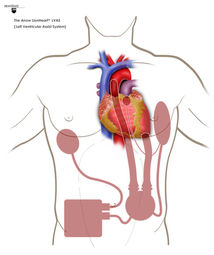Science illustrations
I'm no scientist, so when I'm tasked with creating scientific illustrations, I ask a lot of questions!
This type of illustration is high-value because it visually shows processes and concepts we cannot see, and for this reason, asking lots of questions is important to being accurate with the illustration.
All of these drawing begin with rough sketches, helping to iron out details and making the illustration process more efficient.

Biomaterials
These illustrations were created for the Earth and Mineral Sciences Museum on Penn State's Main Campus, and are included in the Graphic Design page of my portfolio site.
Photo-realistic illustration is more time consuming, but offers details important to understanding what a product is, how it's used, and what it's capable of. Here, I used calipers and millimeter ruler to take careful measurements to ensure accurate representation of the products.
Photography of products is less time consuming, but illustration offers more flexibility with presentation of concept.

Process diagrams
Organization is key to diagrams that tell stories. In these examples, organizing the visual story was necessary to clarify understanding and helpful to publishing research papers for an environmental engineering group at Penn State.
As in many cases, asking questions and working through multiple iterations helped the researchers further clarify their own understanding of how the story is told.











